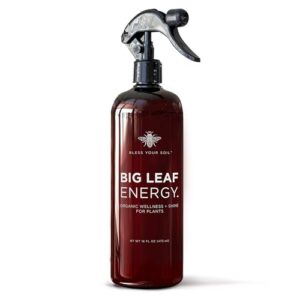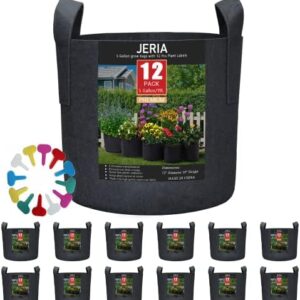Growing herbs is such a rewarding experience. There’s nothing quite like the satisfaction of watching a tiny seedling grow into a flourishing plant, ready to be harvested and used in your favorite dishes. From Seed to Sprout: A Comprehensive Guide to Growing Herbs is the perfect companion for anyone looking to start their own herb garden, whether you’re a seasoned gardener or a complete novice.
One of the best things about growing herbs is that they don’t require a lot of space. Even if you only have a small balcony or windowsill, you can still grow a variety of herbs to add flavor and freshness to your meals. From basil and mint to rosemary and thyme, there are so many different herbs to choose from, each with its own unique flavor profile and culinary uses.
The first step in growing herbs is, of course, planting the seeds. It’s important to choose high-quality seeds from a reputable supplier to ensure that your plants will grow strong and healthy. You can start your seeds indoors in pots or trays filled with seed-starting mix, or you can plant them directly in the ground if you have a garden space available. Make sure to follow the instructions on the seed packet for the best results.
Once your seeds have sprouted and grown into small seedlings, it’s time to transplant them into larger containers or into your garden. Herbs love sunlight, so place them in a sunny spot where they will receive at least 6-8 hours of sunlight each day. Make sure to water them regularly, keeping the soil moist but not waterlogged. Herbs don’t like to sit in wet soil, so it’s important to allow the soil to dry out slightly between waterings.
As your herbs continue to grow, you can start harvesting them for use in your cooking. The best time to harvest herbs is in the morning, when the essential oils that give them their flavor and aroma are at their peak. Use sharp scissors or pruning shears to cut the stems of the herbs, and be sure to leave at least a few leaves on the plant so that it can continue to grow and produce more foliage.
In addition to using your herbs fresh, you can also dry them for future use. Hang bundles of herbs upside down in a warm, dry place with good air circulation, such as a kitchen or pantry. Once the herbs are completely dry, crumble them into airtight containers and store them in a cool, dark place. Dried herbs can be used in cooking, tea, or for making homemade seasoning blends.
From Seed to Sprout: A Comprehensive Guide to Growing Herbs covers all aspects of herb gardening, from selecting the right herbs for your garden to caring for them throughout the growing season. The book includes detailed information on planting, watering, fertilizing, and harvesting herbs, as well as tips for dealing with common pests and diseases that can affect your plants. Whether you’re a beginner or an experienced gardener, you’ll find plenty of valuable information in this comprehensive guide.
Herb gardening is not only a fun and rewarding hobby, but it also allows you to enjoy the fresh flavors of homegrown herbs in your cooking. There’s something special about using herbs that you’ve grown yourself, knowing that they’re free from pesticides and other chemicals. Herbs can elevate any dish, adding a burst of flavor and freshness that you just can’t get from store-bought herbs.
Whether you’re looking to start a small herb garden on your windowsill or plant a large herb garden in your backyard, From Seed to Sprout: A Comprehensive Guide to Growing Herbs has everything you need to get started. With step-by-step instructions, helpful tips, and beautiful photographs, this book is a must-have for anyone who loves to cook with fresh herbs.
So why wait? Pick up a copy of From Seed to Sprout: A Comprehensive Guide to Growing Herbs today and start your own herb garden. You’ll be amazed at how easy it is to grow your own herbs and how much more flavorful your meals will be with the addition of fresh, homegrown herbs. Happy gardening!






